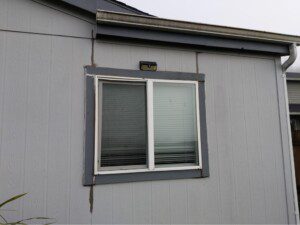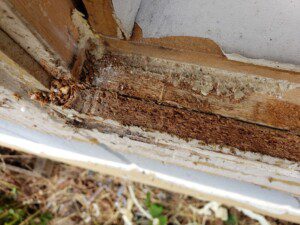
The construction process of manufactured homes does complicate the installation of some flashing, but does not make it impossible. The exterior siding is also the structural sheathing, flashing components should be installed from behind, but exterior components like doors and windows are typically installed over, not through the sheathing.

A significant defect often observed is the lack of flashing at the bottom of the siding and the top of the skirting. This critical junction surrounds the home and is often decayed through to the framing structure. With this type of decay, the exterior sheathing cannot transfer shear forces as necessary. The lack of horizontal wall flashing is not only the standard in manufactured homes, often there is no rake edge or roof edge flashing. Coupled with poorly installed shingles, even shingles lined up with starter shingles, moisture intrusion is often observed from the top down. Other flashing scenarios that present themselves frequently arise around decks, exterior stairs and attached sheds, as seen as well with site built homes. Moisture intrusion is the most important factor in any structure (manufactured or site built). Not only for health and safety concerns, but to maintain the homes’ structure integrity over time.
